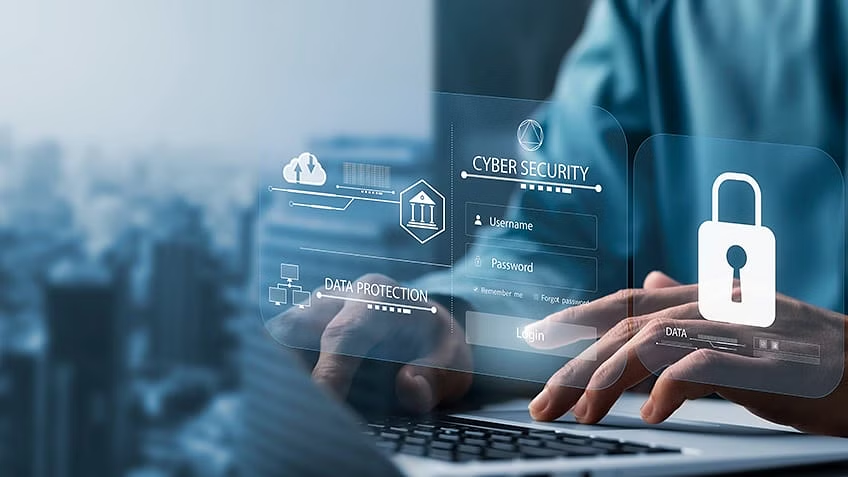Cloud cybersecurity refers to plans and arrangements laid down for the defense of cloud computing environments against cyber-attacks. Protection includes securing data stored, applications, and cloud services. Robust cloud cybersecurity cannot be underscored considering the ever-increasing cases of cyber-attacks that might lead to financial losses, reputational damage, and legal implications.
Adequate cloud cybersecurity employs a blend of technologies, policies, and best practices in guarding the cloud infrastructure. Critical steps toward this end are data encryption, identity and access management, monitoring continually, and planning incident responses effectively. Cloud Detection and Response tools are at work to help organizations have better security. Besides, organizations should maintain compliance with relevant regulations so that sensitive information is kept safe to retain customer and public trust.
Challenges in Cloud Cybersecurity
The benefits of Cloud computing are numerous, but it also offers a unique set of challenges. Among these are:
Shared Responsibility Model: It divides the security responsibility of the platform between the CSP and the client. There needs to be a very clear understanding of this division for complete protection.
Data Privacy and Compliance: Compliance becomes very complex because of regulations like GDPR, HIPAA, CCPA, etc., since data sovereignty and jurisdictional issues come into the picture.
Complexity and Visibility: Because cloud environments are dynamic and something that can be scaled by nature, they may obfuscate visibility and hence are hard to deal with from a security management perspective.
Third-Party Risks: There are considerable risks involved with third-party cloud services in regards to vendor security practices and vulnerabilities most vendors might have.
Key Strategies for Improving Cloud Cybersecurity
Implement a Zero Trust Architecture
Zero Trust refers to the security model wherein no single entity, whether internal or external, is to be trusted by default. Adopting a Zero Trust architecture encompasses:
Continuous Verification: Identity and integrity verification of users and devices trying to access resources occurs regularly.
Least Privilege Access: The access granted to users and applications has to be at a minimum in order for them to perform their functionality.
Micro-Segmentation: It is a process of breaking down the network into smaller segments so that, in case of a breach, it cannot spread to the entire network.
Data Encryption
Encryption is the bedrock of cloud cybersecurity that ensures even when data is intercepted or accessed, it is still secure. Effective strategies in encryption include:
Data-at-Rest Encryption: This prevents unauthorized access to stored data.
Data-in-Transit Encryption: This ensures protection from interception during data transfer.
Key Management: It involves developing good practices for storing and managing the keys to the encryption securely.
Identity and Access Management (IAM)
IAM solutions control who is going to have access to cloud resources and what they can do. Key IAM practices are as follows:
Multi-Factor Authentication (MFA): Requiring more than one form of verification lowers the risk associated with some authentication techniques.
Role-Based Access Control (RBAC): This method grants permissions based on roles, thus ensuring that users get proper levels of access.
Regular Access Reviews: Periodic review and updating of access to ensure that the permissions are relevant for current job roles and responsibilities.
Continuous Monitoring and Threat Detection
This would be very beneficial in real-time identification and mitigation of safety incidents. Best practices include:
Security Information and Event Management: It entails collection and analysis of security data from different sources to offer real-time insights into possible threats.
Intrusion Detection and Prevention Systems: These block malicious activities within the cloud environment.
Automated Response: Through the use of automation, threats that have been identified quicken their response time to mitigate prospective damage. Lastly,
Compliance and Governance
Compliance and adherence to good governance in cloud cybersecurity are warranty-ensuring practices. They include:
Compliance Audits: Follow-up on a regular basis to make sure that the cloud environments meet up to the industry standards and regulations.
Policy Management: Setting up and enforcing security policies governing the usage of clouds and data handling practices
Third-party Risk Management: The company evaluates the security practices of the third-party vendors to make sure that they at least meet up to the company’s set standards.
Best Practices for Cloud Cybersecurity
Choosing the Right Cloud Service Provider
Among the most critical things is the choice of a CSP with very strong security measures in place. These are the key considerations:
Security Certifications: Ensuring that the CSP has relevant certifications like ISO 27001, SOC 2, and FedRAMP.
Security Features: Security features of the CSP, including but not limited to encryption, IAM, monitoring tools, etc.
SLAs: It will go through the SLAs to make sure they meet the company’s security and uptime requirements.
Implementing Strong Authentication and Authorization
The two pillars of cloud security are authentication and authorization. Best practices include:
Password Policies: There are strong password policies in place, focusing on complexity, with regular updating of the same.
Biometric Authentication: Biometric methods, such as fingerprint or facial recognition, will be used to bring an added layer of security.

Single Sign-On (SSO): SSO shall be implemented to make access easy, all while maintaining tight security controls.
Provision for regular security assessment and penetration testing: Regular assessments and penetration testing help in the identification and addressing of vulnerabilities. Best practices include:
Vulnerability Scanning: Scan known vulnerabilities at frequent intervals and patch the vulnerabilities immediately after detection.
Penetration Testing: Making simulations of actual attacks to find weak links in the security posture.
Security Audits: Provide periodic audits for compliance with internal policies and regulations related to security.
Data Backup and Disaster Recovery
Robust recovery plans are another fundamental component of business continuity. The following best practices need to be deployed to ensure this becomes a reality, including:
Regular Backups A regular backup of all data, followed by proper, diverse location storage.
Disaster Recovery: Developing and testing plans to allow fast recoveries in case of a breach or disruptive event.
Encryption of Backup: A protection process for backup data through encryption from unauthorized access.
Employee Education and Training
Human error accounts for a good percentage of security incidents. Proper employee education and training in best practices can prevent this category of risk. This is in connection with proper security awareness training, conducted regularly, in respect to common threats and how they may be avoided.
Phishing Simulations: Conducting simulations to test the ability of employees to recognize and act when faced with a phishing attempt.
Role-Based Training: This trains employees on issues specific to certain job roles or responsibilities.
Next-Generation Cloud Cybersecurity Technologies
Artificial Intelligence, and Machine Learning
With their full potential being recognized at this time, AI and ML become very significant in cloud cybersecurity. Their key applications include:
Anomaly Detection: AI and ML will pick up behavior patterns indicative of a security threat`.
Predictive analytics: Using analytics to pornostate the probable security incident and mitigate vulnerabilities in advance.
Automated threat response: An AI-based automatic response against threats detected, helping reduce time for containment and remediating.
Blockchain for Hardened Security
A good number of advantages associated with blockchain technology in cloud cybersecurity include:
Data integrity: Ensuring integrity with an immutable ledger that blockchain provides.
Decentralized security: Risk mitigation against single failure points by the decentralized nature of blockchain.
Automation of security processes and enforcement of compliance with security policies using smart contracts.
Secure Access Service Edge
SASE merges network security with wide-area networking. Some of the significant advantages include:
Unified Security: United architecture for protecting all users and data across all locations or devices.
Simplified Security Management: Reduced frictions by bringing together the administration of often scattered multiple functions in one single platform.
Better Performance: Improved performance by optimizing routing of traffic and reducing latency.
Conclusion
Flexibility and scalability—though strong features of the cloud—bring a number of security challenges. The bundle of problems demands an effective cybersecurity strategy in place, which can implement artificial intelligence and machine learning for threat detection and automated response. At the same time, blockchain’s decentralized architecture could be instrumental in reinforcing data integrity and getting rid of vulnerabilities hooks associated with centralized systems.
Besides technical measures, there has also to be developed a security-aware culture within organizations through continuous education and training of employees. Human error alone poses a high risk, which could thus be minimized by regular training. Comprehensive planning of incident response and periodic testing enable organizations to be better prepared to face security incidents and to respond to them efficiently.
With the evolution of cloud technologies comes the evolution of regulatory landscapes. Legal, along with reputational reasons, requires organizations to remain compliant with regulations such as GDPR, HIPAA, PCI DSS, etc. Regular audits and adhering to governance practices help in maintaining compliance and demonstrate a commitment to security.
Put differently, cloud cybersecurity is something that demands endless improvement. Organizations can get a secure cloud by embracing a multifaceted approach to it via technological innovation, rigid policy, and proactive education.

